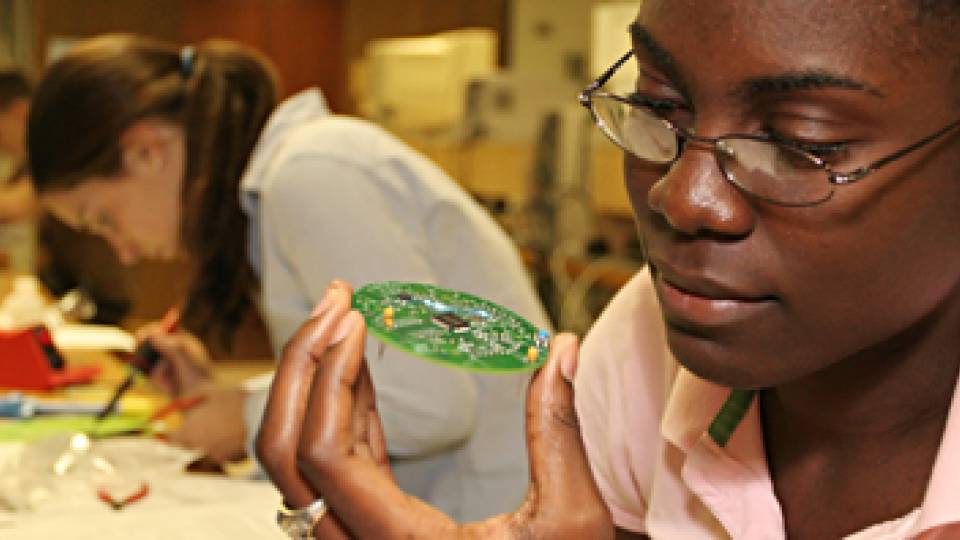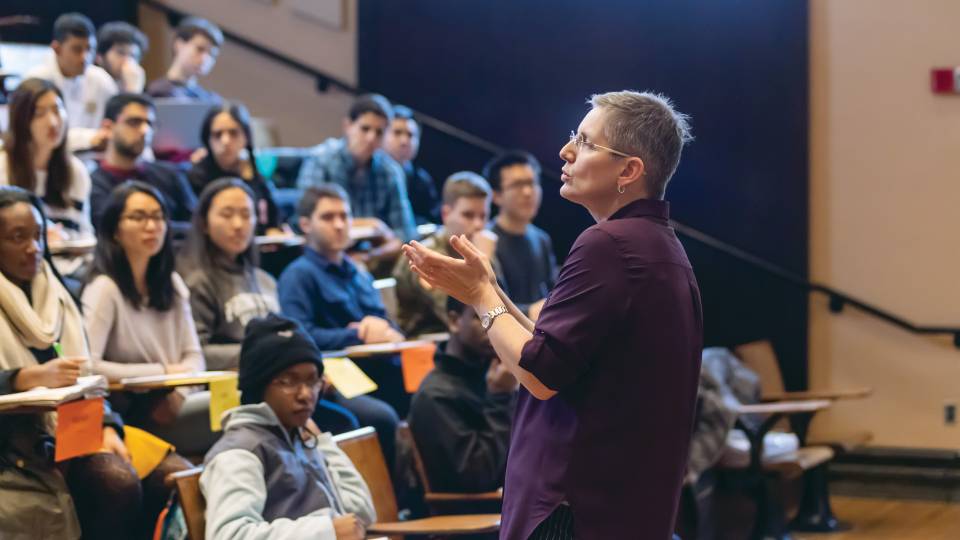Advancing its goal of increasing the number of women in engineering, Princeton's School of Engineering and Applied Science has partnered with Smith College to create a student exchange program. Smith, the nation's first women's college to have an engineering school, graduated its first class of engineers in 2004.
The spring-semester exchange, which will start in the spring of 2006, is intended to expose students from both schools to different learning environments and better prepare women to enter and succeed in graduate school and engineering careers. Smith students and Princeton students, both male and female, who are in their junior year and rank in the top 20 percent of their classes, are eligible for the program.
"One of the major components of our newly created strategic vision is to increase the diversity of students and faculty in our engineering school," said Maria Klawe, Princeton's dean of engineering. "This is a wonderful partnership for both schools to explore approaches to what really makes engineering attractive to women and other underrepresented groups."
"Students from both institutions will benefit greatly from the exchange experience, given the unique academic and social environments at each institution," said Joseph O'Rourke, interim director of Smith's Picker Engineering Program. "The interaction between the two schools will enable both to enhance their students' educational experiences and encourage more women to see engineering and applied science as a viable route for making significant contributions to society."
Smith students attending Princeton will have an opportunity to work closely with faculty members and graduate students on cutting-edge research, with the goal of encouraging and preparing the students to go on to graduate school at Princeton and other top institutions. Smith, a liberal arts college, does not have a graduate program. At Smith, Princeton students will benefit from an innovative and interdisciplinary curriculum that encompasses the study of social responsibility and sustainability.
"It also is an interesting opportunity for Princeton students to try out an environment where most of the students are going to be female," said Klawe. "That is a big change for both men and women."
Women remain grossly underrepresented in the field of engineering: five out of six engineering students and nine out of 10 engineering professors are male. At Smith, however, the 135 female students in the Picker Engineering Program study with a faculty that is more than 50 percent female. At Princeton, women make up about 30 percent of the graduate and undergraduate engineering students (and about 50 percent of all Princeton undergraduates). In addition, more than 15 percent of Princeton engineering faculty members are women, a 50 percent greater representation than the national average.
The exchange initiative also supports the recommendations of Princeton's Task Force on the Status of Women in Science and Engineering, which released a report in September 2003. The task force noted substantial improvements in attracting and retaining women scientists and engineers at Princeton, but called for a range of new approaches to address persistent imbalances.
Students in the engineering exchange will take a normal load of courses at their host institution and conduct an independent project. Special living arrangements will be made for Princeton men who participate in the exchange; such accommodations are already common for male students in other exchange programs at Smith. Princeton and Smith have not set a number of slots for the exchange; participation will depend on student interest, the availability of housing and other logistical considerations.
The first Smith class of engineers, who graduated in 2004, won graduate fellowships from the National Science Foundation and earned admission to some of the nation's top graduate programs, including Princeton, Harvard, the Massachusetts Institute of Technology, Cornell, Michigan, Dartmouth and the University of California-Berkeley.
The Princeton School of Engineering and Applied Science is a small but influential program with a major emphasis on independent research and a well rounded, multidisciplinary education. Undergraduate students work alongside faculty members and graduate students on cutting-edge projects with potential for substantial real-world impact. The school recently completed a strategic planning process that called for bold steps to educate leaders and create technologies that solve global societal problems. Increasing the diversity of students and faculty and creating more opportunities for women is a major part of these goals.



